Robert Anderson Hatch
Family
Robert Anderson Hatch was born in Dartmouth in 1895 and baptised at St Saviours on 6th June 1895. He was the eldest son and second child of Peter Anderson Hatch and his wife Florence Elizabeth Jefford.
Neither Peter nor Florence had been born in Dartmouth - Peter came from Salcombe, and Florence from London. Peter's father, William Henry Hatch, was a Seaman Gunner in the Royal Navy. Peter's mother, Theodosia Fairweather, came from Salcombe, and the family continued to live there while William was away at sea. In 1873 Peter lost his father, and his mother died the following year; so he and his brothers were brought up by his grandmother, Jemima Fairweather. The 1881 Census recorded him and his brother John living with his grandmother Jemima, and his aunt Priscilla Anderson, in Union St Salcombe. Jemima was a baker, and Peter went into her trade.
By the time of his marriage to Florence, on 28th May 1893, at St Clements Townstal, Peter had moved to Dartmouth, where he ran a bakery in Clarence St. How he met Florence is not known. At the time of her marriage, she too lived in Clarence St, but she was born in Westminster, London, where her father, Robert Jefford, worked as a bootmaker. In the 1891 Census she was recorded, age 17, living with her brother, Robert Jefford (junior), and his wife Maud, in Oakley Road, Islington. Her brother was a musician, but no occupation was recorded for Florence.
Peter and Florence's first child was a girl, named Theodosia Fairweather for Peter's mother, born on 25th March 1894 and baptised at St Saviours on 13th May of that year. Robert followed a year later; Edwin Francis in 1896, and Florence Elizabeth (nicknamed Winnie) in 1899. Peter, named after his father, was born in 1900, but sadly died when only nine weeks old.
The 1901 Census recorded the family still in Clarence St, where Peter ran a bakery and grocery shop. By 1911, Richard, aged 9, and Henry, aged 8, had been added to the family, and both Theodosia, aged 17 and Robert, now aged 15, were working for their father, Theodosia in the shop and Robert as his father's assistant. Francis, aged 14, was a telegraph messenger. The younger children were all at school.
Service
When war broke out, Robert was one of the first from Dartmouth to volunteer. His name appears thirteenth on the list of a group of men who joined "Lord Kitchener's Army" and whose name appeared in the first list entitled "Roll of Honour", which was published weekly in the Dartmouth Chronicle during the first two years of the war.
Robert's service papers, like so many, have not survived. According to Soldiers Died in the Great War, he enlisted in Exeter, and first joined a Hussars Regiment, subsequently transferring to the 2nd Battalion Royal Irish Regiment.
The 2nd Battalion RIR was mobilised at the outbreak of war from training camp as part of the British Expeditionary Force and fought at Mons and Le Cateau, suffering heavy losses. By October 1914 they were south of Ypres, at La Bassée.
On 19th October 1914, while supporting a French attack on Fournes, they were involved in an attack on Le Pilly, which they took and held. However, they were then surrounded, and cut off. The battalion was virtually wiped out, with many dead and the rest taken prisoner, many of whom were wounded. The battalion was then gradually built up over the next few months, returning to the front line near Ypres in March 1915, only to suffer many casualties again during the second battle of Ypres.
During the month of June 1915 the Battalion was out of the line and during this period, according to the Regimental History, fifteen officers and 406 other ranks joined. One of these was Robert, whose date of arrival in France is recorded in the 1915 Star Medal Roll as 16th June 1915. More men joined in July, bringing the battalion finally back to full strength. They moved to the Somme area in August 1915, and Robert received his first introduction to trench warfare. The Regimental History describes this period as follows:
From the end of August to the beginning of February 1916 the battalion headquarters was stationed at Englebelmer, with two companies holding trenches 50-55 along the ridge west of Beaumont-Hamel. The companies were relieved weekly. The German line was about 300 to 350 yards distant from ours. On the whole this was a very quiet time. The strength of the battalion on 30th August was 29 officers and 1022 men. The casualties during the 5 ½months were 8 men killed and 41 wounded. The German action was confined to the occasional shelling of our trenches or to bursts of trench raiding.
They were then out of the line for six weeks for rest and training, returning on 24th March, but remaining there only for five days. During April they were either in the front line or in close support, until 3rd May, when they were once again taken out for rest and more training. On 20th May, they transferred to 22nd Brigade, 7th Division, which they joined at Morlancourt, south of Albert. As the build up to the Somme offensive developed, the battalion was alternately in the front line, at rest, or training. Though the tempo had quickened since the previous year, casualties were still relatively low; eleven men were wounded in action in June. On 10th June a night patrol came under heavy fire and its officer and three men were wounded, the officer subsequently dying of his wounds.
On 1st July 1916, the 7th Division was allocated to the southern sector of the Somme front at Mametz. The attack there was taken forward by 91st Brigade and 20th Brigade, including the 8th and 9th Devonshires (see, for example, the story of Robert Phillips Willing). The 22nd Brigade, including the 2nd Battalion RIR, was in Divisional reserve. In this sector of the line, the attack was successful - Mametz was taken by late afternoon on the first day, and subsequently held as the attack was taken forward.
On 4th July, the 2nd Battalion was ordered to move via Mametz to consolidate the line on Quadrangle Trench, Wood Trench and Strip Trench, south and west of Mametz Wood, thought to be in British hands, and to reconnoitre the wood itself. On reaching the position, however, it was found to be strongly occupied by German forces, and the Battalion came under heavy attack. They were forced to retreat to Mametz. On the night of 5th/6th July, they attacked with the 1st Bn Royal Welch Fusiliers (Siegfried Sassoon's battalion). Though the Royal Welch were able to secure Quadrangle Trench, the Royal Irish were unable to secure Wood Trench - according to the Regimental History, thick German wire "proved an unsurmountable obstacle" - and were forced once again to retreat.
During this period, the Battalion suffered three officers killed, eight wounded, and one missing; for the men, the tally was 21 killed, 158 wounded, and missing 36. After this, the 7th Division was withdrawn to Heilly, for "reorganisation and training". Mametz Wood was eventually taken a few days later, after more very heavy fighting - see the story of George Henry King.
On 13th July the Battalion returned to Mametz Wood, now held by the British, in preparation for the attack on the German second line position on the Bazentin Ridge. Their objective was the village of Bazentin-le-Petit. The attack began at 4.30am on the morning of the 14th July, and was successful, taking the village with 150 prisoners. However, they were then subject to a very heavy counter-attack, and although they were able to hold the village and hand it over at the end of the day, they suffered more heavy losses: 3 officers killed and 11 wounded; 24 men killed, 208 wounded and 80 missing. After five days in brigade reserve, the Battalion was withdrawn to Albert and took a train for La Chaussee, where they were allowed three weeks to recover - with more "reorganisation and training". They spent the first part of August in corps reserve and the second part in brigade reserve, supplying working parties.
The next attack did not take place until early September, partly due to severe weather. The aim was finally to overrun all the remaining "start-line" objectives - High Wood, the villages of Ginchy and Guillemont, and Falfemont Farm.

On 3rd September, the 22nd Brigade was ordered to capture Ginchy village, and in particular, the high ground to the east of it (the position shown on the map as "Ginchy Telegraph"). The village was protected by a "crescent-shaped defence line that ran from north to south" around the western side of the village. The trenches immediately in front of the village were Beer Trench to the north, and to the south, Porter Trench and Stout Trench, and then ZZ Trench".
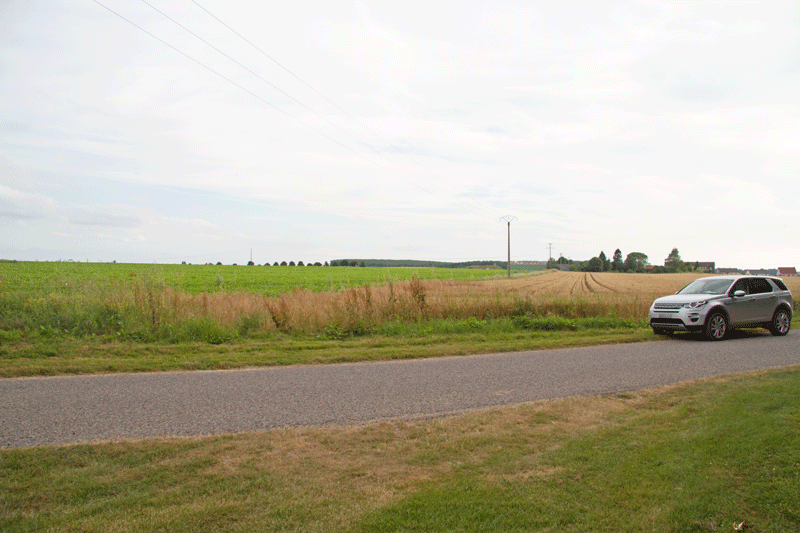
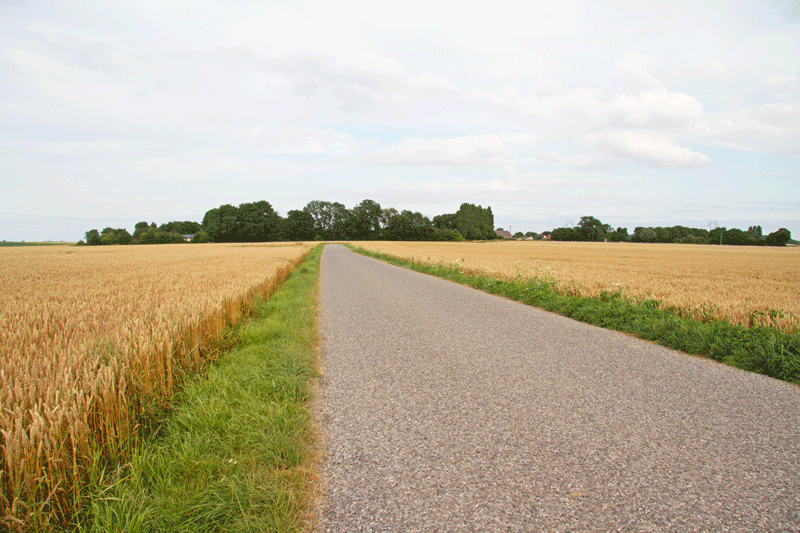
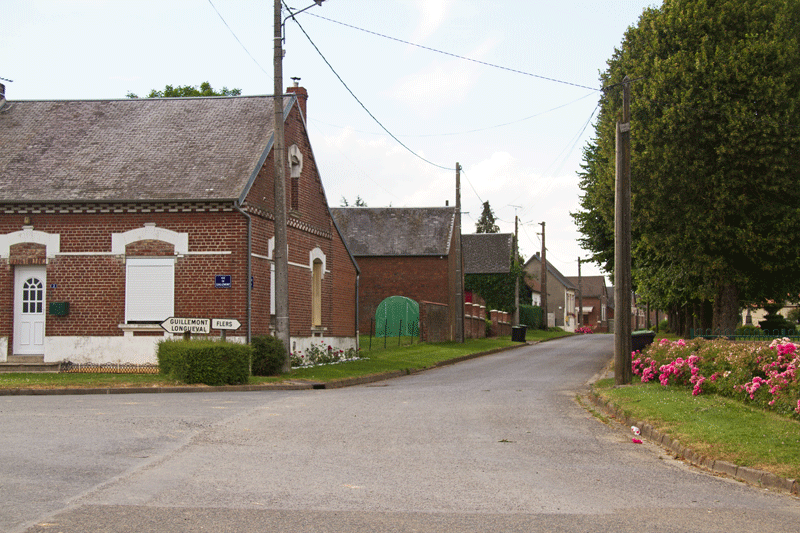
The 20th Battalion Manchester Regiment was on the right, the 1st Battalion Royal Welch Fusiliers on the left, the 2nd Battalion Royal Warwickshire Regiment in support, and the 2nd Battalion RIR in Brigade reserve. Although the Manchesters were able to take the village itself, they came under heavy machine gun fire when entering orchards to the east of the village. The Fusiliers were able to take Beer Trench, but were unable to advance beyond it.
Due to the way the companies were deployed, there are several separate reports of the action in the 2nd Battalion's War Diary.
The 2nd Battalion RIR was due to go into Ginchy in the afternoon, after the main attack, to make four strongpoints on the crest of the ridge beyond the village. B Company was sent in first, but during the advance, one platoon became separated from the rest of the company. Meanwhile, a heavy counter-attack had developed from the north-east, forcing the 20th Manchesters and 2nd Warwickshires back, and B Company's assistance was requested. Reaching the remnants of the 20th Manchesters and 2nd Warwickshires, the rest of B Company attempted another attack on the village, but this failed "owing to shortage of men and heavy machine gun fire".
A and D Companies were sent in next, to attempt to retake the village. According to the Regimental History:
almost immediately after starting they came under a very heavy artillery barrage .... machine gun and rifle fire now opened on the advancing line from Ginchy in front and from Hop Alley on the left flank. Casualties immediately became heavy. The lines moved on steadily for about a hundred yards and then by short rushes to Stout Trench. A Company, having suffered severely, was unable to advance beyond this. D Company front line advanced to Porter Trench, but as that trench was practically obliterated and the line was enfiladed, it gradually withdrew and joined the second line in Stout Trench.
Meanwhile, C Company had been tasked to attack Hop Alley, on the left of the Brigade's front, to the north-west of the village. Though they were able to join up with a party of the Royal Welch within about fifty yards of their objective, they had suffered heavy casualties. They held their position despite heavy shelling, but could not advance further. Eventually they were relieved at about 1.30am on 4th September.
At about 8pm on 3rd September, the remainder of B Company joined A and D Companies in Stout Trench, which they held for the following day, under heavy fire, and without food or water, while a further attack was made on the village by 20th Brigade. They were finally relieved on the morning of 5th September.
The Regimental History records that the total casualties during this action were 4 officers killed, 7 wounded and 2 missing; 18 men killed, 129 wounded and 63 missing. One of the accounts in the Battalion War Diary comments that "A large number of our wounded were abandoned owing to the lack of stretcher-bearers'.
Death
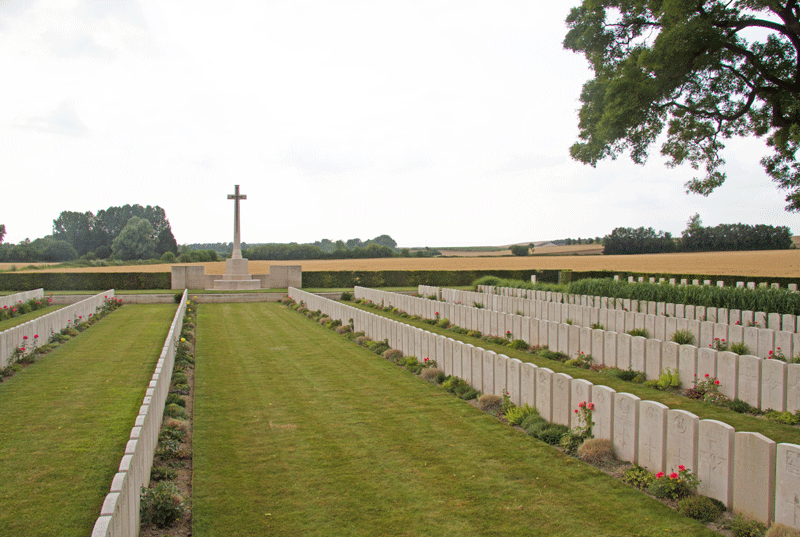
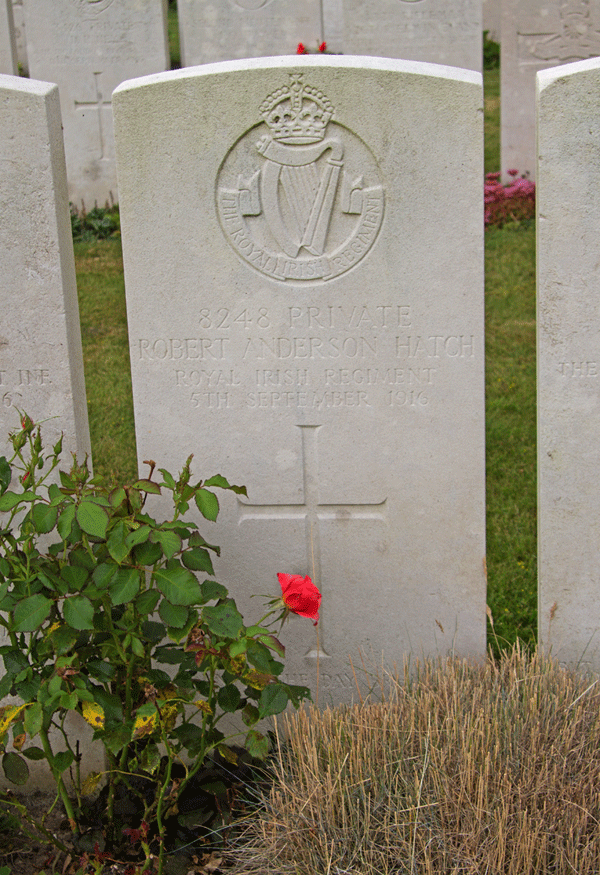
None of the available records located so far indicates whether he was wounded during the Battalion's actions in Mametz Wood, or during the attack on Ginchy - further research may clarify this.
Commemoration
Robert is commemorated in Dartmouth on the Town War Memorial, on the St Saviour's Memorial Board, and on one of the two memorial boards in the Flavel Church.


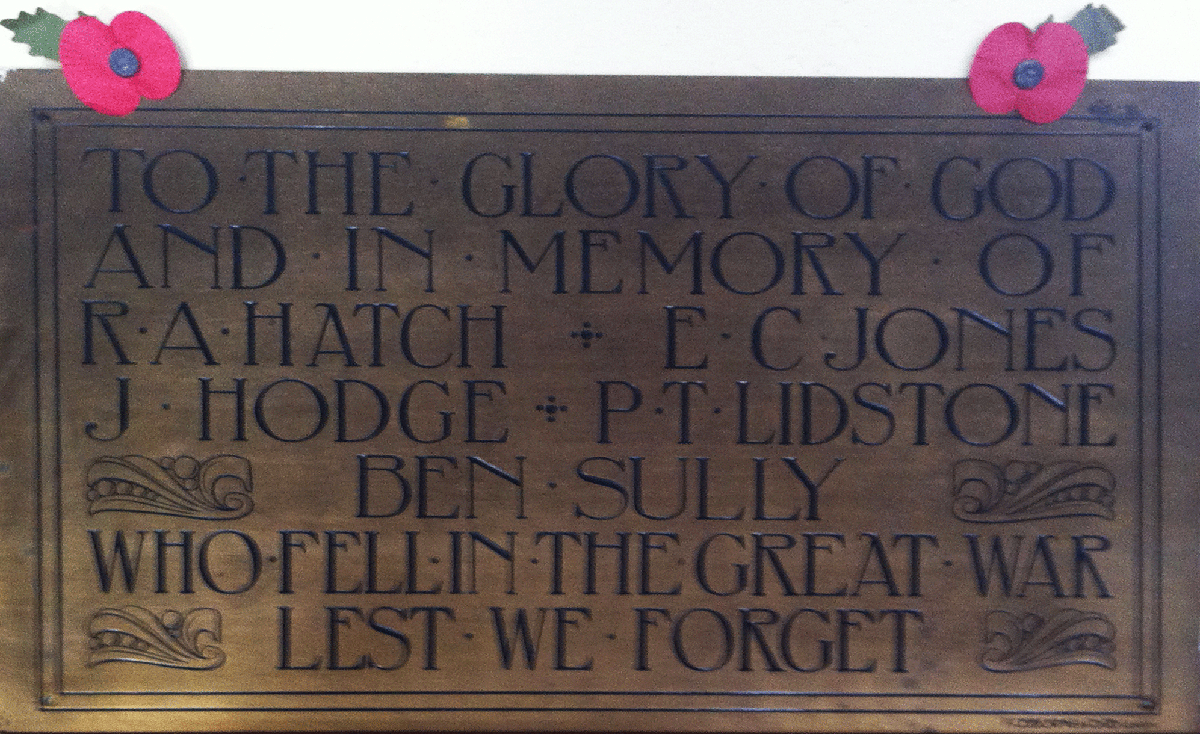
He is also commemorated in Ireland's Memorial Records 1914-1918, which is the Roll of Honour of Ireland's First World War Dead, being those who either served in Irish Regiments or those who were born or were resident in Ireland at the time of their death and were serving with units from Britain and the Empire. One hundred sets of these records were sent to libraries and cathedrals throughout Ireland and Allied countries and a set was placed within the Irish National War Memorial in Dublin.
Sources
The Campaigns and History of the Royal Irish Regiment Volume II 1900-1922, by Brigadier General Stannus Geoghegan CB, publ 1927 Blackwood, Edinburgh and London. Accessed online here.
War Diary of the 2nd Battalion Royal Irish Regiment for June-September 1916 available for download at The National Archives, fee payable, reference WO 95/1662/2.
Information Held on Database
| Surname: | Hatch |
| Forenames: | Robert Anderson |
| Rank: | Private |
| Service Number: | 8248 |
| Military Unit: | 2nd Bn Royal Irish Regiment |
| Date of Death: | 05 Sep 1916 |
| Age at Death: | 21 |
| Cause of Death: | Died of wounds |
| Action Resulting in Death: | Battle of the Somme |
| Place of Death: | Near Ginchy, France |
| Place of Burial: | La Neuville British Cemetery, Corbie, France |
| Born or Lived in Dartmouth? | Yes |
| On Dartmouth War Memorial? | Yes |
| On St Saviour's Memorials? | Yes |
| On St Petrox Memorials? | No |
| On Flavel Church Memorials? | Yes |
| In Longcross Cemetery? | No |
| In St Clement's Churchyard? | No |
| On a Private Memorial? | No |
| On Another Memorial? | No |















